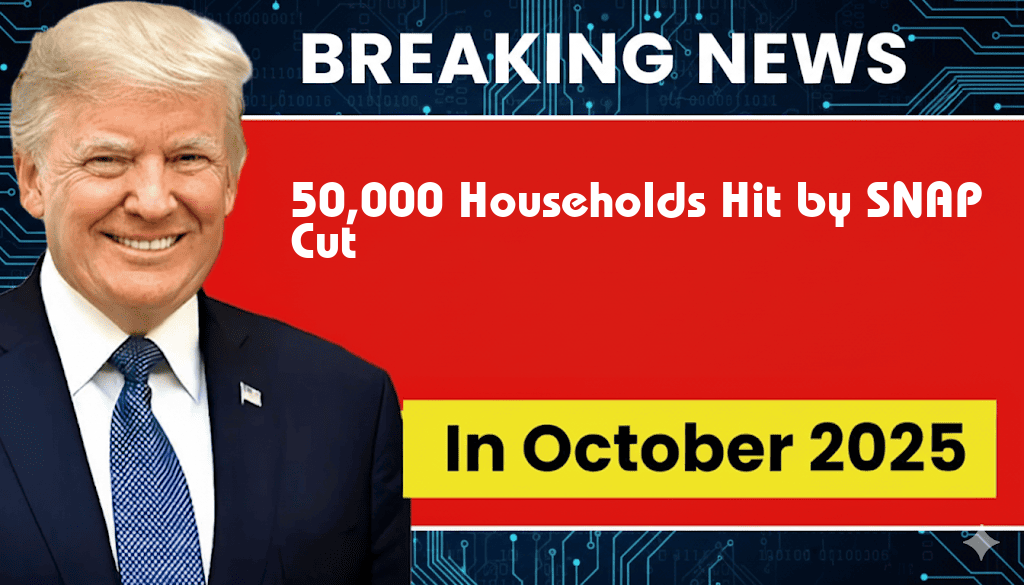November Brings $58 Monthly SNAP Reduction for 50,000 Households
This November, approximately 50,000 households in the United States will experience a significant cut in their Supplemental Nutrition Assistance Program (SNAP) benefits, with a reduction of $58 per month. This adjustment comes as part of a broader initiative to recalibrate the program amidst rising costs and changing economic conditions. The reduction is expected to have a profound impact on low-income families who rely on these benefits for essential groceries and sustenance. As inflation continues to challenge household budgets, this decrease is raising concerns among advocates and policymakers regarding food security and economic stability for vulnerable populations.
What is SNAP?
The Supplemental Nutrition Assistance Program (SNAP) is a vital federal aid program designed to help low-income individuals and families afford nutritious food. Administered by the U.S. Department of Agriculture (USDA), SNAP provides monthly benefits to eligible households, allowing them to purchase food items at authorized retailers. The recent adjustment underscores the difficulties faced by many families as they navigate the complexities of budgeting and food access.
The Reasons Behind the Reduction
The decision to reduce SNAP benefits by an average of $58 monthly stems from a combination of factors, including:
- Inflation Adjustments: As food prices fluctuate, the USDA frequently reviews and adjusts SNAP benefit levels to reflect current economic conditions.
- Program Funding: Changes in federal funding allocations can impact the overall budget for SNAP, necessitating adjustments to benefit amounts.
- Eligibility Reassessments: An increase in household income or changes in family size can also result in reduced benefits for some participants.
Impact on Households
The reduction will affect a broad spectrum of households, particularly those already living on the edge of food insecurity. Many families rely on SNAP not only to meet daily nutritional needs but also to alleviate financial stressors associated with other living expenses. Advocates for low-income families are emphasizing the potential consequences of this cut:
- Increased Food Insecurity: Many households may struggle to afford adequate food, leading to a rise in hunger and malnutrition.
- Strain on Local Food Banks: As families face reduced SNAP benefits, local food banks and charitable organizations may see increased demand for assistance.
- Health Implications: Insufficient access to nutritious food can lead to long-term health issues, particularly among children and elderly individuals.
What Experts Are Saying
Food security experts and social welfare advocates are voicing their concerns about the implications of the SNAP reduction. According to a report by the Feeding America, the decrease in benefits could exacerbate the challenges faced by families already struggling to make ends meet. “This reduction in benefits comes at a time when many families are already experiencing heightened economic pressure,” said a spokesperson for the organization. “Addressing food insecurity requires a comprehensive approach, and cuts to essential programs like SNAP are counterproductive.”
Potential Solutions and Support
In light of these upcoming changes, several organizations and policymakers are advocating for increased support and resources for affected families. Possible solutions include:
- Advocacy for Policy Changes: Encouraging policymakers to reconsider funding levels for SNAP to ensure that benefits keep pace with inflation.
- Community Support Programs: Local initiatives aimed at assisting families with food resources, such as community kitchens and food distribution events.
- Education on Food Access: Providing resources to help families better navigate food purchasing and budgeting.
Conclusion
The upcoming $58 reduction in SNAP benefits for 50,000 households is indicative of the ongoing challenges faced by low-income families in the United States. As these households prepare for the impacts of this change, community support and advocacy remain crucial in ensuring that all individuals have access to the food they need. For more information about SNAP and its benefits, visit the USDA SNAP website.
Frequently Asked Questions
What is the reason behind the $58 monthly SNAP reduction?
The $58 monthly SNAP reduction is part of a broader adjustment to the program aimed at addressing budget constraints within federal and state welfare programs.
How many households are impacted by this SNAP reduction?
Approximately 50,000 households will be affected by the SNAP reduction this November.
When will the SNAP benefits reduction take effect?
The SNAP benefits reduction will take effect in November, impacting eligible households’ monthly assistance immediately.
What should affected households do in response to the SNAP reduction?
Affected households are advised to review their budgets and explore additional resources or assistance programs to help mitigate the impact of the SNAP reduction.
Can households appeal the SNAP benefits reduction?
While households cannot appeal the reduction itself, they can contact their local SNAP office for guidance on available support services and options for assistance.
